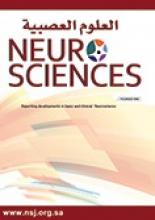Abstract
OBJECTIVE: This study was undertaken to assess the incidence of diabetic neuroarthropathy and its related morbidity.
METHODS: The medical records of 296 diabetic patients were analyzed retrospectively between June of 1998 and July of 1999. The patients with long standing, poorly controlled diabetes mellitus and associated peripheral neuropathy were evaluated clinically and radiographically for the presence of arthropathic changes in the feet. Clinically, neuropathy was considered if there was absence of ankle jerk or glove and stocking sensory loss, or both. Radiographically, the presence of stress fractures, dislocation/subluxation, lytic or arthritic lesions of the bone and joints were taken as indicative of the disease. They were treated conservatively by total contact casting or surgically in the form of ray excision, amputation and skin grafting. They were followed up for an average period of 13 months. Results were evaluated clinically and radiographically.
RESULTS: The maximum incidence of diabetes mellitus was in the age group of 41-80 years. Diabetic neuropathy was present in 37 patients (12.5%). Male to female ratio was 23:14 with an average age of 70.42 years. The mean duration of diabetes mellitus was 14.2 years. Seventeen feet in 11 patients (4%) were found to have diabetic neuroarthropathy. The joints involved were tarsometatarsal (76%), metatarsophalangeal (59%), subtalar (47%) and interphalangeal joints (41%). Two patients underwent foot amputations. Patients treated with total contact casting resulted in satisfactory progress.
CONCLUSION: Diabetic neuroarthropathy, a less recognized complication of diabetes mellitus needs greater attention in Saudi Arabia. High-risk feet should be subjected to routine radiographs or preferably a computerized tomography examination. The timely detection of this problem can save many patients from disastrous complications.
- Copyright: © Neurosciences
Neurosciences is an Open Access journal and articles published are distributed under the terms of the Creative Commons Attribution-NonCommercial License (CC BY-NC). Readers may copy, distribute, and display the work for non-commercial purposes with the proper citation of the original work.






